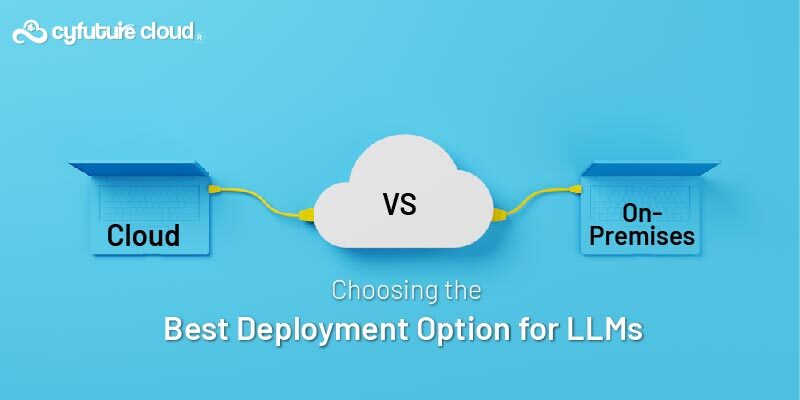Table of Contents
- What Is Virtualization?
- What Is A Hypervisor?
- Consider the accompanying angles to pick the ideal hypervisor
- Utilizations Of Hypervisor
- Categories Of Hypervisors
- Difference Between Bare Metal and hosting Hypervisors
- Host Hypervisor
- Benefits Of Bare Metal Hypervisors
- Bare Metal Server vs hHypervisor
- Conclusion
A hypervisor is a product layer. This permits the clients to control and screen virtual machines. The hypervisor gives seclusion between virtual machines to run freely of one another. This framework allows the client to make virtual PCs. Hypervisors are grouped into 2 classifications – type 1, local or uncover metal hypervisors, and type 2, or hosting hypervisors. The uncover metal hypervisors use in big business figuring, where a venture utilizes this framework to coordinate and run its tasks in affordable cloud hosting. Generally, it can execute in any type of hosting.
Here we will talk about the significance of uncovering metal hypervisors from different angles.
What Is Virtualization?
Before moving to the hypervisor, you want to be aware of virtualization. Virtualization is an innovation that assists you with making virtual PCs. For instance, this innovation permits you to set up and run both Linux server and Windows server on a similar PC. For this situation, the actual assets like the CPU, and memory of one PC can be run on another PC. This will save the cloud server hosting price and even small enterprises will easily adopt virtualization in their business infrastructure.
Virtualization relates to numerous computational innovations like the virtualization of circle stockpiling, servers, working frameworks, or organizations. Entrepreneurs get profit from this virtualization cycle as it empowers them to raise their business. They can run new PCs practically associates with old frameworks without putting resources into new hardware.
Hypervisors expect to play out the virtualization.
What Is A Hypervisor?
The hypervisor is a sort of virtualization programming that empowers you to make, run and screen virtual machines. It can control cloud computing foundations like Amazon EC2 and Google Compute Engine. The hypervisor interprets the order demands among physical and virtual assets. Accordingly, it plays out the assignment of virtualization.
The hypervisor is additionally known as Virtual Machine Monitor (VMM) because it relegates each virtual machine its part of figuring power and capacity units. Thusly, the hypervisor guarantees no cross-over among different virtual machines. This is a significant benefit of utilizing a hypervisor; assuming anything turns out badly in one virtual machine that won’t intrude on the working of different frameworks. For instance, one framework with security issues can disengage from the others.
Consider the accompanying angles to pick the ideal hypervisor
- Firstly, affirm that your hypervisor is viable with your own hardware.
- Secondly, take a look at the presentation, the executives, and the chances of future adaptability of your assets.
- Thirdly, remember the accessibility and dependability element of your hypervisor.
Utilizations Of Hypervisor
Hypervisors use for work area virtualization, malware examination, and server combination. Most organizations utilize this product; in some cases, hypervisors use by people to run elective working frameworks. At this time, hypervisors view as a fundamental piece of distributed computing.
Categories Of Hypervisors
Hypervisors can be of two classes: type 1 and type 2. Every classification has its advantages and disadvantages, and they use in various circumstances and by various clients. A brief and basic clarification will help:
Type 1 Bare Metal Hypervisors
Here, the hypervisor is introduced on plain hardware. The primary thing introduced here as OS is the hypervisor and it straightforwardly speaks with the under hardware. Then, at that point, the hardware assets are virtualized and they can speak with the other virtual machines. This kind of hypervisor uses by business endeavours. A few normal models are Microsoft Hyper V, Oracle VM Server for x86, VMware ESXi, and Oracle VM Server for SPARC.
In this hypervisor, there is no boundary or square between the hypervisor and the hardware. The hypervisor is put on the “uncovered metal” part of the hardware; in this way, it is classified as an “Exposed Metal Hypervisor”.
Type 2 or Hosting Hypervisors
This hypervisor is somewhat not the same as type 1. For this situation, the hypervisor isn’t straightforwardly introduced on the hardware; however on the highest point of the running working framework. This type uses by individual PC clients to run an option working framework in a current PC. VirtualBox, Qemu, and VMware Workstation Player are a few models.
Difference Between Bare Metal and hosting Hypervisors
The bare metal server and hosting hypervisor vary from different angles. A short portrayal to help you:
Bare-Metal Server
Firstly, Type 1 or Native hypervisor. Secondly, it can straightforwardly access the hardware. Thirdly, placed on the hardware part and runs straightforwardly with virtual machines. Fourthly, do hardware-based virtualization. Fifthly, runs the visitor working framework & applications. Sixthly, Simple, assuming you have the finest hardware setup. Lastly, Has direct admittance to hardware with virtual machines, However, it is highly Scalable as it isn’t subject to OS. Moreover, faster; as it can straightforwardly get to the hardware parts
Read More: Bare Metal Server
Host Hypervisor
Firstly, also known as a Type 2 hypervisor. Secondly, accesses the hardware through the OS Thirdly, runs on an ordinary working framework. Fourthly, does the Operating System based virtualization? Fifthly, run as an application on the host working framework. Sixthly, the simpler arrangement, as you have a current working framework. Lastly, does not have direct admittance to having hardware and its assets. However, less adaptable as it is exceptionally reliant upon the basic OS Moreover, slower; as it is reliant upon the OS
Benefits Of Bare Metal Hypervisors
How about we close for certain benefits:
Performance
Uncover metal hypervisors run on local hardware parts for guaranteeing better execution.
Security
Any sort of weakness of OS can’t influence the presentation of bare-metal hypervisors, consequently, it got more.
Bare Metal Server vs hHypervisor
| Aspect | Explanation |
|---|---|
| Definition | Bare metal virtualization refers to running virtual machines (VMs) directly on physical servers without an underlying operating system (OS). |
| Hypervisor | Utilizes a hypervisor that interacts directly with the hardware, managing VMs’ access to resources. Common hypervisors include VMware vSphere, Microsoft Hyper-V, and KVM. |
| Performance | Offers excellent performance since VMs have direct access to hardware resources, minimizing overhead compared to traditional virtualization. |
| Isolation | Provides strong isolation between VMs, enhancing security and preventing interference between workloads. |
| Use Cases | Ideal for high-performance workloads, such as databases, AI/ML, and applications requiring low-latency and dedicated resources. |
| Configuration Flexibility | Allows customization of hardware configurations for VMs, making it suitable for specialized or resource-intensive tasks. |
| Management | Requires more in-depth knowledge of hardware and hypervisor setup compared to traditional virtualization with an OS layer. |
| Complexity | Can be more complex to set up initially but offers advantages in terms of performance and resource control. |
| Examples | VMware vSphere on ESXi, Microsoft Hyper-V on Windows Server, Proxmox VE, and bare metal Kubernetes clusters are common implementations. |
Conclusion
In conclusion, virtualization and hypervisors have become more appealing lately as they can decrease IT expenses and assist with using cloud assets all the more proficiently. Picking the right hypervisor is an exceptionally individual cycle, as there is a lot of virtualization with different varieties. In this article uncovered metal and hosting hypervisors are depicted with their benefits and faults. However, the two of them uses in various cases and situations moreover. Moreover, for organizations who need to run weighty jobs and access their hardware for all intents and purposes, exposed metal hypervisors are a decent decision.
Send this to a friend

 Server Colocation
Server Colocation CDN Network
CDN Network Linux Cloud Hosting
Linux Cloud Hosting Kubernetes
Kubernetes Pricing Calculator
Pricing Calculator
 Power
Power
 Utilities
Utilities VMware Private Cloud
VMware Private Cloud VMware on AWS
VMware on AWS VMware on Azure
VMware on Azure Service Level Agreement
Service Level Agreement 



















